News
April - Take a Year-End Trip and See How the Japanese Celebrate New Year Updated in April 2020
Towards the end of last year, my university classmate in China suddenly sent me a WeChat message. “I’ll come to Japan at the end of the year to ring in 2020.” He had visited Japan more than once for business over the past 20 years; and indeed, he and his family have been frequenting several of Japan’s most famous tourist routes for over a decade. Familiarity and goodwill made him feel that there are many places in Japan that need to be tasted slowly, so to speak. When he found out about the discount packages offered by airlines at the end of the year, he suddenly decided to come to Japan on a whim. He invited another classmate and his wife along, and the two couples set off to Nagoya and Okayama to visit old classmates, including me.
Ahead of their arrival, I intended to recommend Nagoya's famous sightseeing spots and restaurants. However, a quick search online revealed that all historical and cultural attractions and industrial sightseeing facilities in Nagoya, including those with distinctive izakayas or pubs, were closed for about 10 days before and after New Year's Day. Looking back, I recalled how I couldn’t find a place to eat during the New Year's holiday. On weekdays, there were no pedestrians in the bustling commercial district, and no lights in the shops—only the quiet and peaceful wind.
My friend asked where the Japanese would go during the New Year. He wanted to experience an authentic Japanese New Year. I found a travel theme that best suited his wish, and pleasantly arranged our New Year’s itinerary.
Breakfast at a Cafe
At 9 o'clock in the morning, we went to a local cafe for breakfast. Nagoya's breakfast culture is unique in Japan. For breakfast, if you order a cup of straight coffee, you can also get a piece of toast and a boiled egg or other bread items for free. This is the most pleasant morning time for Nagoya people on holiday: drinking coffee while browsing the various newspapers and magazines available in the store.
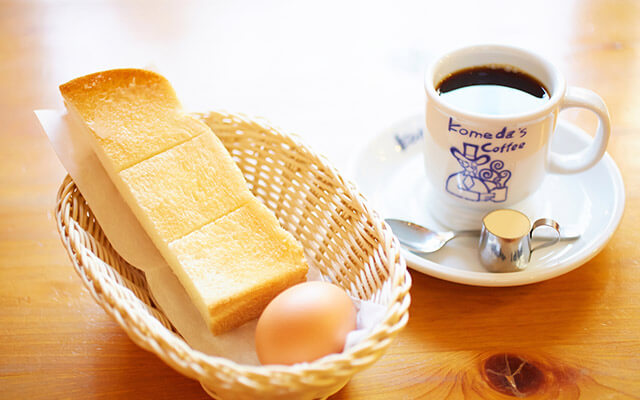
Breakfast for a cup of coffee
Nagoya's cafe breakfast discount service has a history stretching back 60 years. This service not only leads to more coffee sales, but it has also rooted itself in the daily habits of people in and around Nagoya City. One of the best-known cafes is Komeda’s Coffee. This landmark chain store can be seen everywhere throughout the city (and in Tokyo recently). It’s so familiar that locals think of it as an extension of their own living room. The cafe’s rich coffee and warm atmosphere remind one of the retro 60s-70s Showa era. According to surveys, Komeda’s is the easiest place to think of when meeting an acquaintance or friend in Nagoya. If you want to imagine a typical slice of life scene from Nagoya, look no further than people enjoying a drink at Komeda’s Coffee.
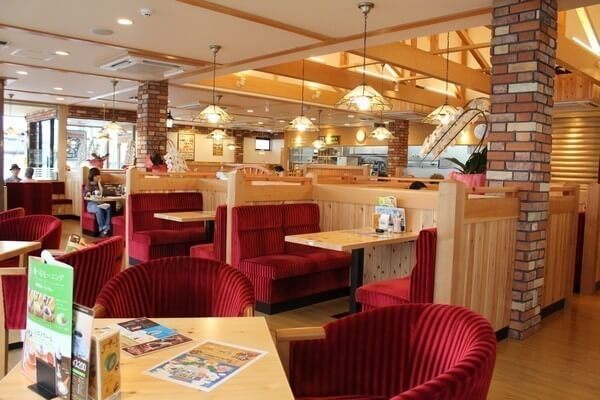
Komeda’s Coffee Shop
When we entered Komeda’s, the shop was nearly full. In addition to the regular customers in the shop, there were now whole families, groups of students, and young men and women all enjoying breakfast with their plentiful free time at the end of the year.
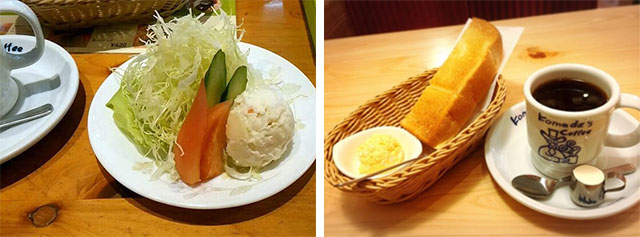
We ordered the standard: coffee and toast with salad. My friends particularly liked the bread and cabbage. Komeda’s not only pays attention to the ingredients and how the coffee is roasted, but they also produce their own bread. There are even special procedures to keep the bread fresh and tasty. You may be surprised to know that Aichi Prefecture was one of the first areas to start cabbage cultivation in Japan, and winter cabbage production remains the largest in Japan.
Leisure “Bath” Time
After breakfast we went to a large spa-like public bath (sento) in Nagoya. The Japanese often call it Super-Sento.
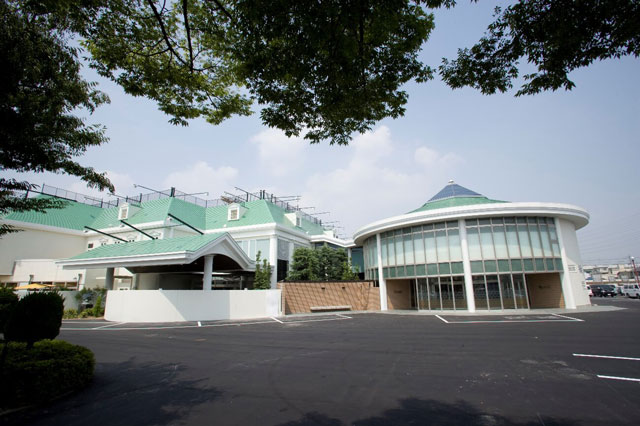
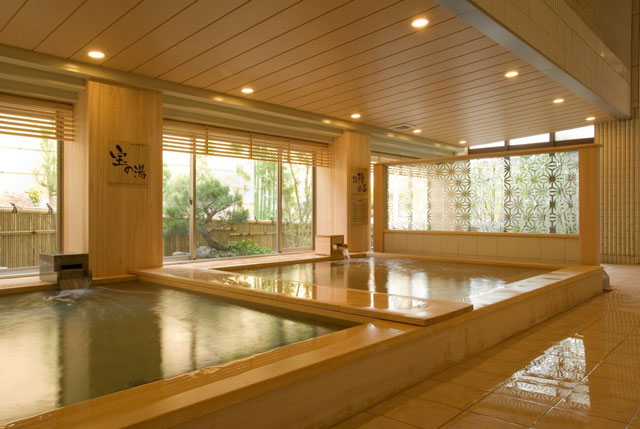
Indoor bath (courtesy of UTOPIA TAKARA)
The Japanese habit of public bathing has been around for hundreds of years. However, after rapid economic development, improved housing conditions, and changes in lifestyle during the 20th century, people no longer go to public baths on a daily basis. As a result, bathhouses in residential areas have gradually decreased. These days, hot springs or large baths are especially popular for people on vacation. And in urban areas without natural hot springs, comprehensive leisure facilities like Super-Sento have become popular: these facilities integrate bathing, health and beauty services, meals, and entertainment. Although there are changes in the services and forms of large-scale bathhouses, they continue to provide a healthy, elegant, and comfortable place for people to get together and spend time with family and friends. To get a feel for the way Japanese people spend the holidays, a large Super-Sento should certainly be on your to-do list.
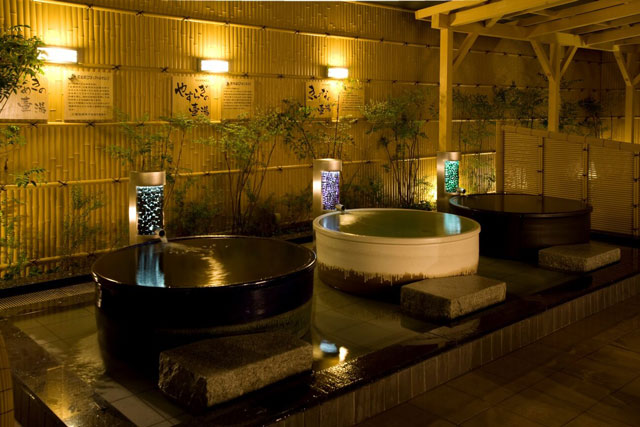
Outdoor bath (courtesy of UTOPIA TAKARA)
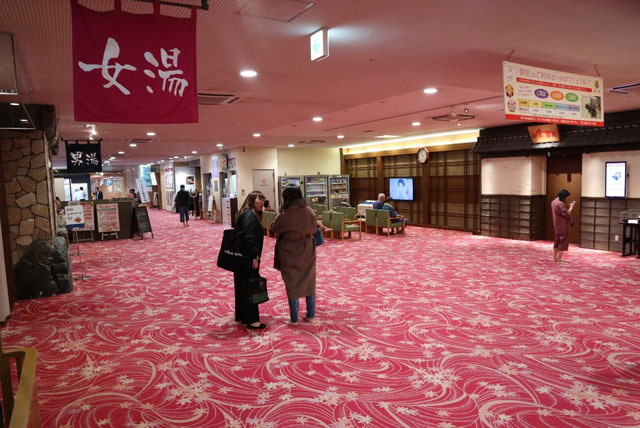
The spa’s lobby and entrance to women’s bath (courtesy of UTOPIA TAKARA)
In order to psychologically prepare our Chinese guests, I told them in advance that you couldn’t wear any clothing or swimsuits inside Japanese hot springs and baths. They mentioned that they had experienced hot springs in Hokkaido many years ago. At the time they were nervous about being naked in front of others, but they could see that everyone around them was comfortable. They figured, “When in Rome, do as the Romans do.”
At the front desk, the waiter handed us a tote bag with towels and bathrobes. After bathing and enjoying the sauna, you can don the bathrobes and go to the cafes and restaurants to eat, play around in the game center, stretch out in the activity center, watch TV, or read comics to your heart’s content. Lounges and sofas of every shape and size allow guests to relax and unwind without interruption.
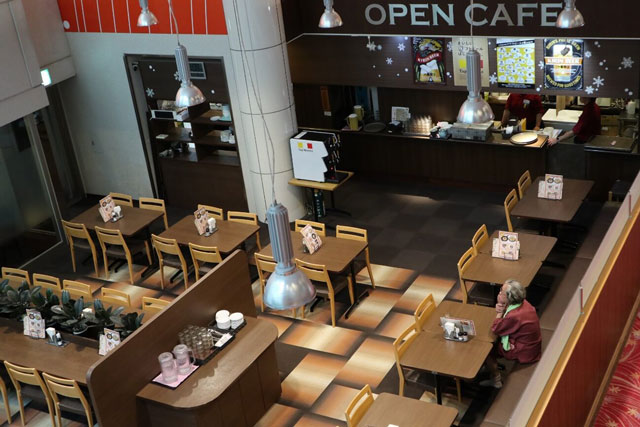
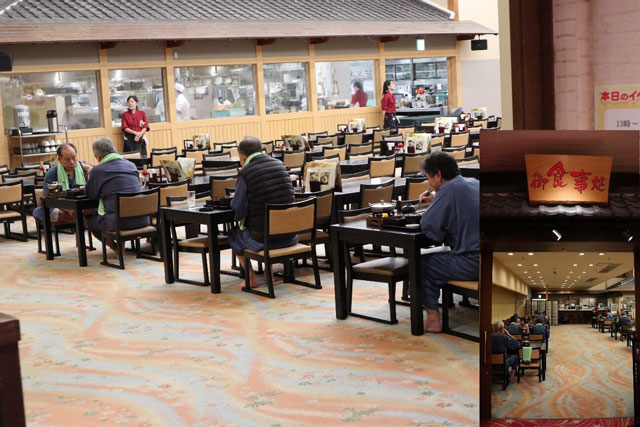
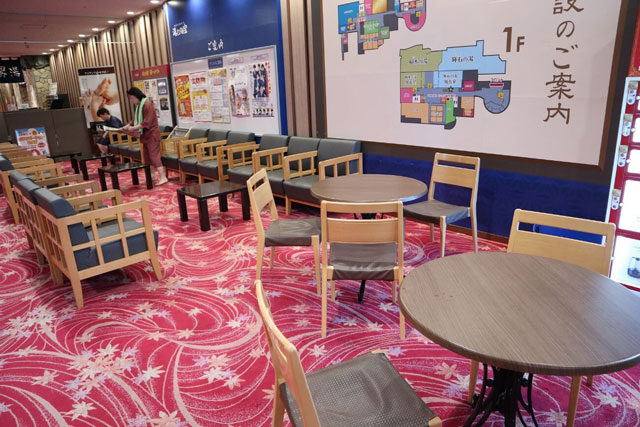
These facilities are designed to make you feel at home. Young children can play and eat safely, and adults can unwind. If it is not a particularly crowded day, guests without a pressing schedule can find a suitable place to rest and relax as long as they like.
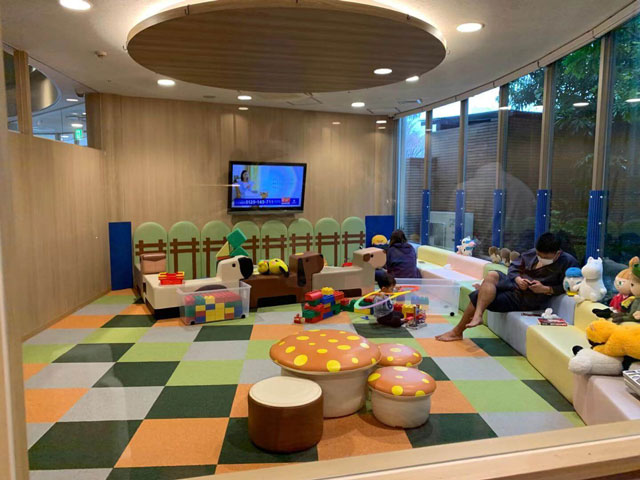
Infant Play Room
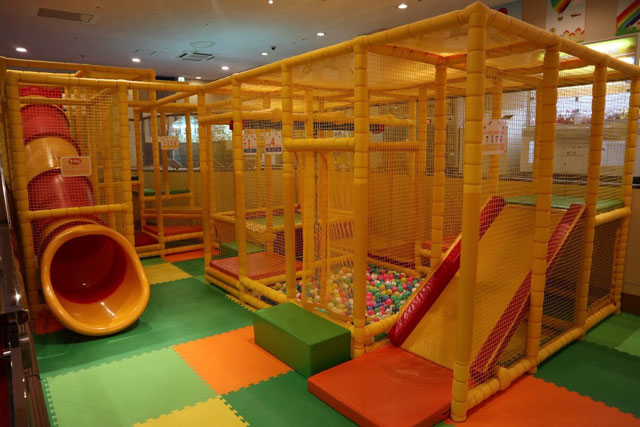
Play space for preschool children

It also provides a convenient place to relax for those who are busy with work. There is a special computer seat in the manga (comic book) library which allows you to work quietly, respond to e-mails, etc.
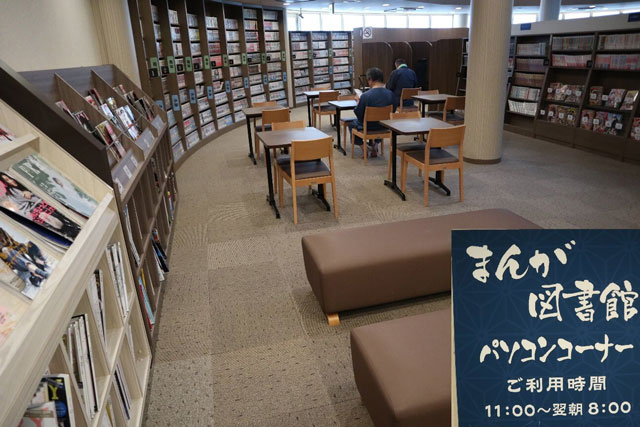
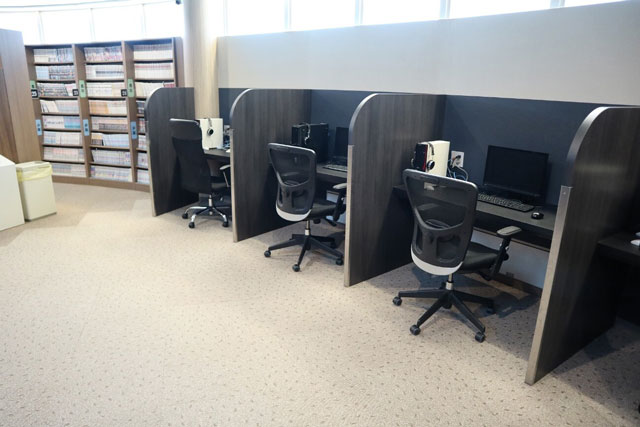
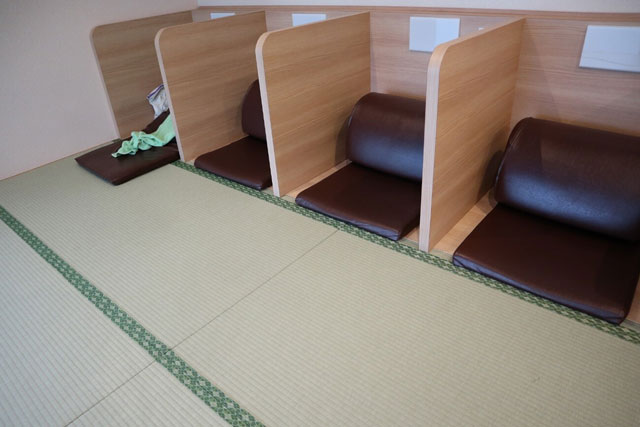
You can find this kind of family-friendly place in Japanese cities of all sizes. By accommodating a variety of low-cost relaxation facilities into the larger bathhouse, a unique ecosystem has evolved for Japanese to recover from fatigue and restore their physical and mental health. Different cities feature facilities that specialize in local tastes—both in cultural entertainment and in food served in the spa’s restaurants. As such, it has become something of a national pastime in Japan to visit hot springs or public baths.

Nagoya-style course and special healthy course
In the changing room, I noticed that our assigned lockers were not side by side, so we would not see each other while changing. This was probably a special arrangement of the service desk. Although the Japanese are accustomed to being naked inside the bath, some people do not want to be seen by acquaintances when they undress. If people are wearing things like girdles or medical assistive devices, they would rather keep it to themselves. By scattering a group’s assigned lockers in the changing room, the front desk staff cleverly protected the privacy of their guests.
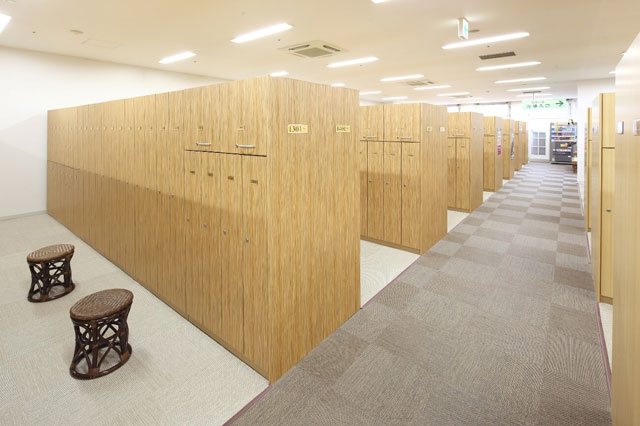
Changing rooms (courtesy of UTOPIA TAKARA)
The same applies to the powder room after bathing. There is a partition between the mirrors of each seat, which can block others from watching you groom. Although it is just a public bath, facility design choices and thoughtfulness towards guests’ privacy are comparable to high-end hotels.
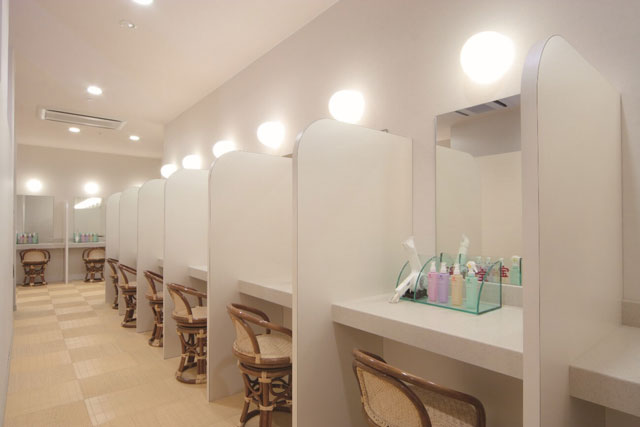
Powder room (courtesy of UTOPIA TAKARA)
Bathhouses aren’t just for personal relaxation—Japanese people also choose these places to celebrate with family. The set lunch we ordered was served in a rather formal banquet room that would be appropriate for either important birthday events or informal meetings. The color, aroma, taste, and the combination of tableware and serving style were all immaculate. Although some dishes were just about as small as the tip of a chopstick, there were 27 of them! So, in the end, we were not able to finish everything. My friends gushed over the experience—they really felt they had a deeper experience and understanding of Japanese culinary culture and service through this banquet cuisine.
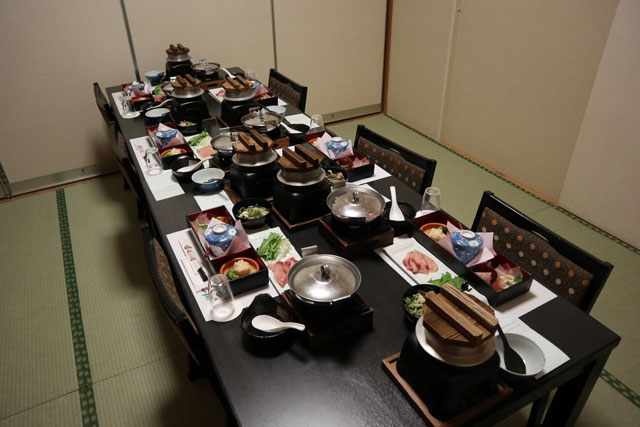
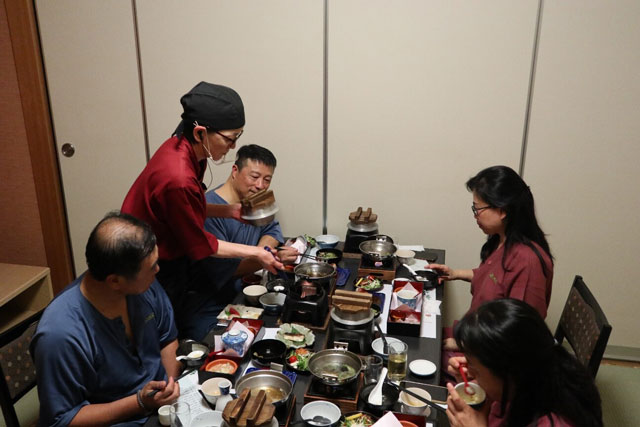
Shrine Visit
After having our fill of good food and drink, we set off to visit a shrine—Nagoya’s famous Atsuta Jingu Shrine. Visiting shrines at the end and beginning of the year is something all Japanese do. Atsuta Jingu is one of the oldest shrines in Japan and is dedicated to the Kusanagi Sword, one of the three artifacts inherited from the gods of the Shinto faith. This shrine is second in prestige only to the Ise Grand Shrine in Mie Prefecture. During the New Year, nearly 6.5 million worshippers come to Atsuta Jingu every year from near and far.
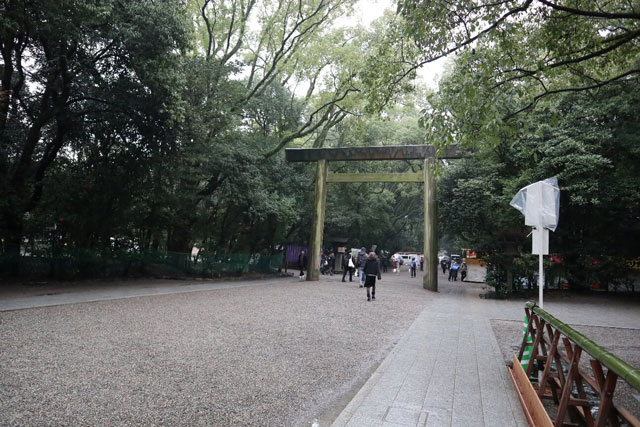
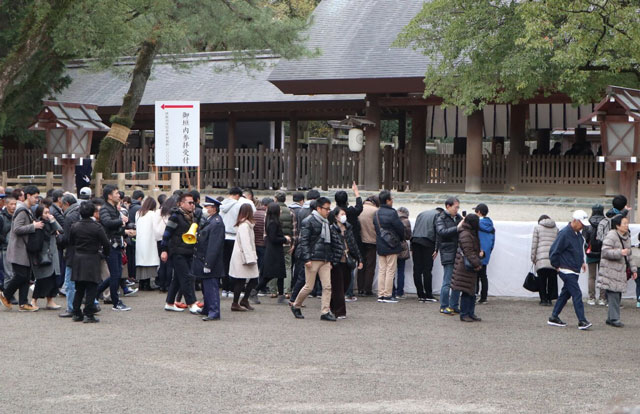
On the way to the main building, you will pass under three enormous wooden gates shaped a bit like the Chinese character “kai” (开)—these are the famous “torii” gates. Shrines belong to the realm of the gods, and these torii are the borders between our earthly world and that of the divine. Anybody is welcome to visit these shrines throughout the year to purify themselves and pray. People bow in front of the main shrine building and ask for blessings and protection. Because of the huge number of visitors during New Year, police are stationed at popular shrines to maintain order. Scenes from this shrine during the New Year are really quite spectacular.
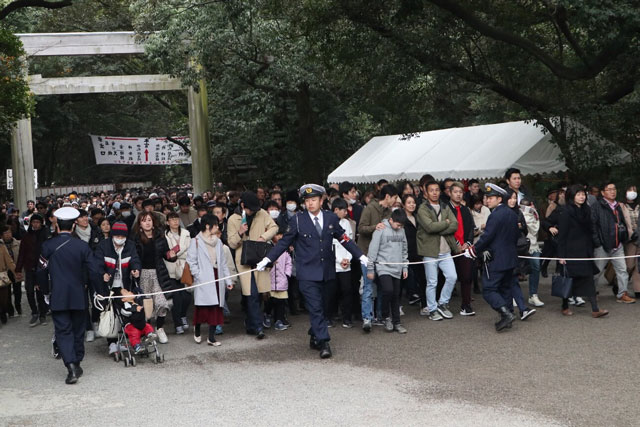
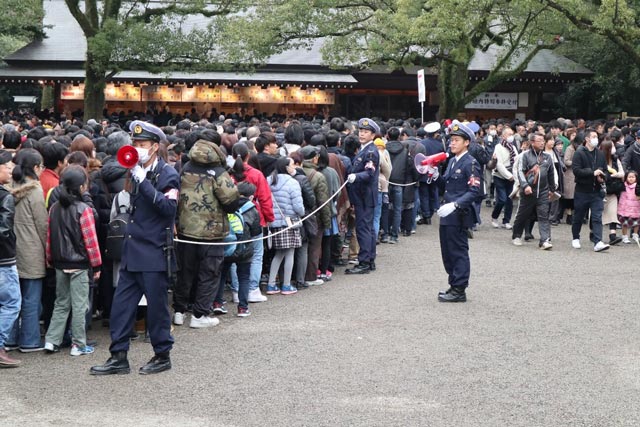
After praying at the shrine’s main building, people purchase a small paper scroll called an “o-mikuji”, or fortune, from the shrine’s priests. Everyone eagerly reads the fortune to confirm their luck for the coming year, and carefully read warnings about how they should behave.
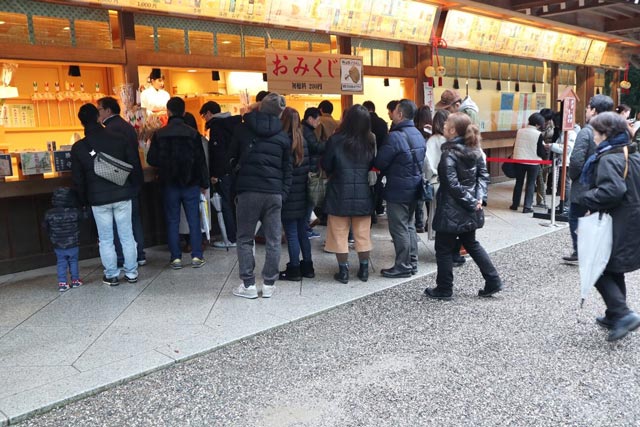
People waiting in line for their fortunes
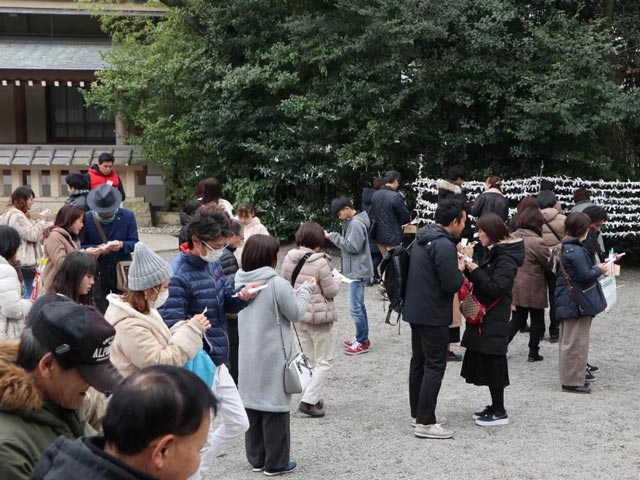
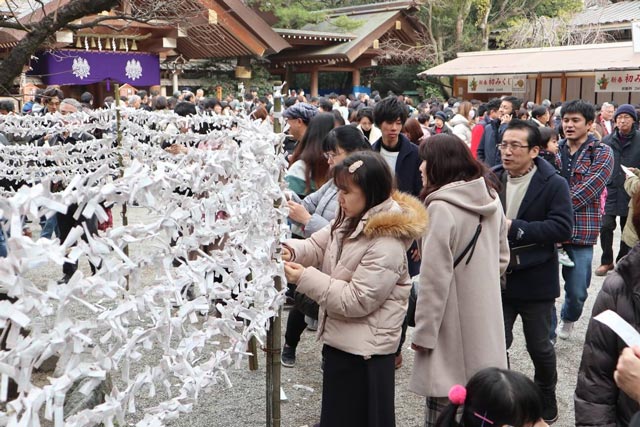
If you get an unlucky fortune, you can tie it to a rope at the shrine so the bad luck doesn’t stick with you.
Izakaya at Night
My friends have known about izakaya, or Japanese pubs, for a long time, but they had never entered a popular local izakaya due to the language barrier. In order to join them in a new izakaya experience, I booked one that I often pass by but never step into. Upon entering, a worker led us to our seats in a great booming voice typical of izakaya. The customers sitting at the main counter were all young men standing, drinking, and talking. This place was not at all spacious, but the crowds of patrons and constant shouts from the staff somehow encouraged my guests to let down their guard and relax, even as they were squeezed up against fellow drinkers, the din of voices pulling everyone closer still.
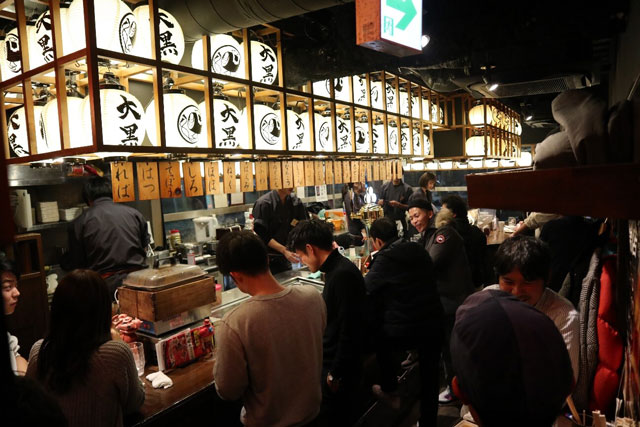
We ordered some grilled side dishes, and, after a round of drinks, we moved on to a second restaurant—a special Nagoya-style fried chicken wing restaurant. Here we were sat on tatami and could take our time eating in a relatively quieter atmosphere. These two pubs were both totally authentic and totally different from each other, and gave my friends a taste of Japanese nightlife.
Whoops! Wrong Train
After the Nagoya trip, two of my friends reserved seats on a Shinkansen to visit another classmate in Okayama. However, they got on the wrong train! They accidentally boarded an earlier train, and only discovered their mistake when they found people already seated in their designated spots which they thought they had reserved. An attendant told them that they could get off at Osaka and catch the next Shinkansen—the one they had tickets for—to Okayama. The kind attendant even took them to the transfer platform in person after arriving in Osaka. A few minutes later their train arrived as scheduled. On the last day of the year, the aisles of the carriages were packed with passengers without seat reservations, but their seats were empty and readily available for them.
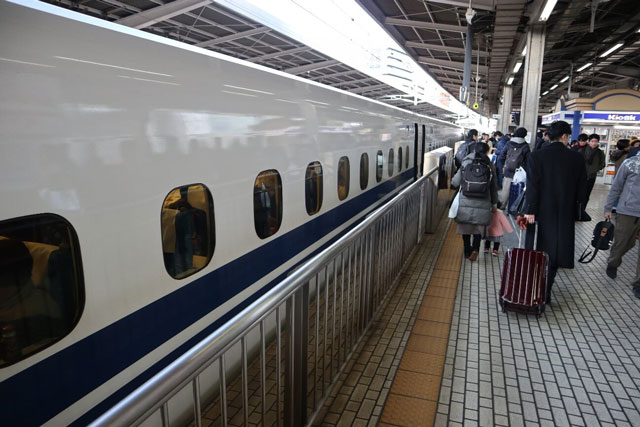
Shinkansen platform
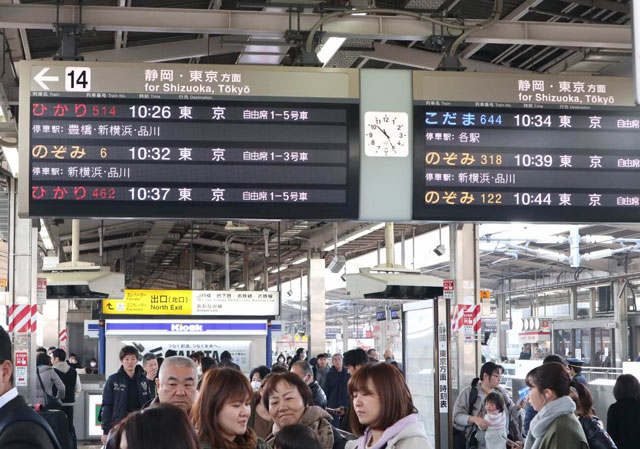
Every few minutes, trains enter the station and depart. The departure time is listed on the top row of the signboard.
After this little adventure, my friend joked that they got two Shinkansen rides for a single ticket—not a bad deal! This process also allowed them to experience the kindness and dedication of Japanese transportation service providers—my friends were deeply impressed. In fact, everywhere they went in Japan they experienced great and thoughtful service, a big difference from what they were used to back home.
I once read about the importance of international travel by Jiang Xun, a prominent painter, poet and writer in Taiwan. He said that travel is a great time for introspection. It is an opportunity to use different cultures as lenses to examine things in one’s own life─to try to understand the differences between cultures, and to realize that there are no advantages or disadvantages. It is impossible not to become subjective in our views, but travel and tourism allow us to slowly get rid of our prejudice and degree of subjectivity. Even if you only participate on a guided tour, you can still find ways to broaden your horizons. So, all travel is worthwhile—because as long as you take time to reflect on your experience, you are better able to think about the value and meaning of life when you return home.
Two of my friends spent New Year's Eve in Okayama, and the quiet city allowed them to experience a peaceful New Year. As for my friends who spent the New Year in Nagoya, after experiencing queues at the baths, crowded shopping malls, and throngs of worshippers at the shrine, they remarked that Japanese New Year is so festive, with so many scenes of family members and friends traveling together, accompanied by lots of laughter. They enjoyed seeing how different places had different styles. All of them said it was a worthwhile trip and would return again someday.
Article/Photo
Ouyang Weiyi (Ibunka Rikai Forum-Forum for Intercultural Understanding)
Editorial Modifications by JST Japan Window Editorial Office







